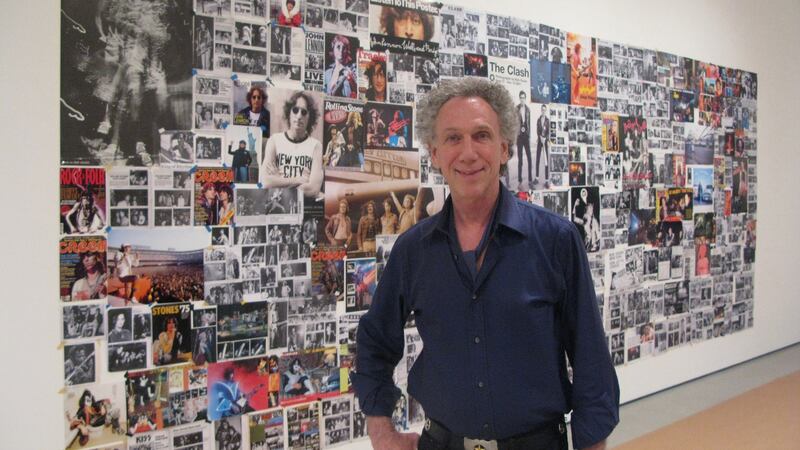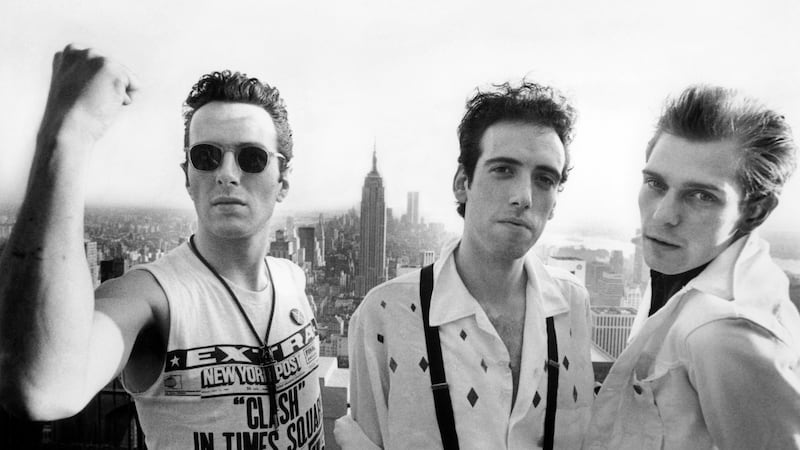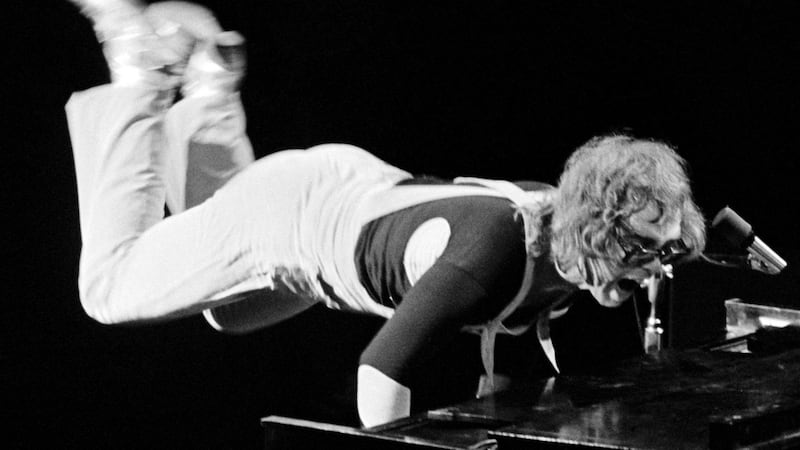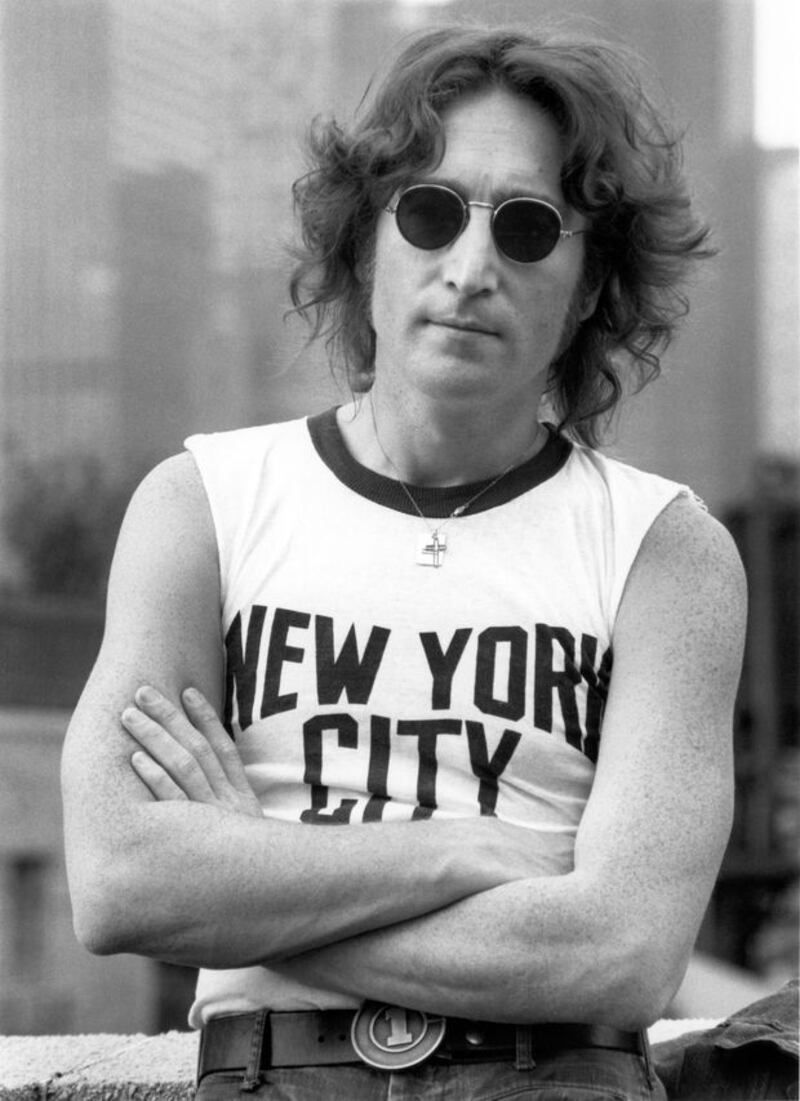Bob Gruen doesn't just know where the bodies are – he took photos of them before they were buried. Now in his mid-70s, Gruen's career as a rock music photographer started in 1970 when he was invited to work with Ike and Tina Turner. The duo liked photos he had taken of their concerts in and around New York City and subsequently introduced him to their then record label's publicist.
What happened next is a classic example of the "right-time, right-place" scenario: the publicist admired Gruen's casual sense of ambition so much that he introduced him to his own music biz contacts. Within a year, Gruen was the personal photographer of John Lennon and Yoko Ono during their NYC sojourn.

“Serendipity has definitely played a part,” agrees the soft-spoken man who can still count Ono as one of his long-time friends. “That’s why it’s not easy to show someone how to be in the best place at the best time. Looking back, I think what I did was to turn any opportunity to my advantage. Sometimes people get the break, but they let it pass. My advice is don’t hesitate – you gotta seize them. But that’s just the way I am. I remember my grandfather saying to me that I could sell ice to the Eskimos, so I guess you just have to make things work for you. That’s what I did, and so far it seems to be going okay!”
Of course, Gruen didn’t just pick up a camera at the age of 25, press random buttons and hope for the best – his primary early mentor was his mother, an amateur photographer.
“Oh, she wasn’t just an influence – she actually taught me how and when to squeeze the buttons and how to print my pictures. She was also a lawyer, so she taught me about the business side of things, to think about my pictures after they were printed. At a very young age, early teens, even before – way before I took up photography – I had small home businesses, so I learned all about expenses, income, outgoings, losses and gains, and so on.”

That seems quite unusual for the time, I suggest. Many a promising career, not just in the arts, has foundered on the lack of such knowledge and acumen. Gruen admits that his mother “was unusual, too”. By comparison, he points to the late Ruth Bader Ginsburg, and “how she made advances for women in the legal profession in the 1950s, but my mother graduated from law school in 1932, so that was very out of the norm. She was a major inspiration. Quite obviously, she never let things hold her back and she taught me that, too.”
Throughout the 1970s and 1980s there was no stopping Gruen's rise as one of the great rock'n'roll photographers. His at-ease personality appealed to the parade of rock stars who stood or posed in front of his cameras; the list is long and impressive and as well as John Lennon and Yoko Ono includes Patti Smith, New York Dolls, The Clash, The Ramones, Blondie, Television, Sex Pistols, Led Zeppelin, David Bowie, The Who, Elton John, Queen, Courtney Love and Green Day.
Of all of them, Gruen seems to hold a torch for Lennon and Ono. As the only photographer allowed into their lives for any appreciable length of time (separately as well as a couple), it’s understandable he would have more of an awareness of what made them tick.
“Like any friends you make,” he says, “you learn how to get along with them, and both John and Yoko were very perceptive people. They were aware of living in the present and how to have a good time. They were very funny – not many people might be aware that Yoko is quite witty, but then you couldn’t live with John without having a good sense of the absurd.
“And, perhaps unusually for the time, they ate very well – Yoko was very knowledgeable about nutrition and health, and she certainly made John well-informed of that. She also stood firmly for feminism and equality, and that was something John became quite aware of, too.”

Only with rare exceptions, if at all, would such levels of access be countenanced now. As for the way in which many artists and their management now control the time official photographers have at live gigs (rarely more than the first three songs), Gruen says the changes occurred in the 1980s when the multi-corporates started taking over record labels.
“They just wanted to take control of the images,” he states. “That didn’t make much sense to me, and so shortly after that I stopped shooting live gigs because I really wasn’t interested in taking a few shots of a band or a singer within the space of a few songs. I’m more interested in capturing emotions or a sense of what’s going on around the musician over a period of time. Taking control of an artist’s image was very misguided but unfortunately that level of control still exists, and I’m not sure it will ever change. And, of course, all the photographers at the front of the stage for those few songs get, pretty much, the same shots. I just don’t see the point of that.”
There are no regrets on Gruen’s part for these changes. In perhaps typical New York fashion, he says it simply doesn’t help him to regret. “I live in the present and look towards the future, so there’s hardly anything I wish I could do or change again. I’ve no interest in going back today to Max’s Kansas City with the people that were there. It was fun back then, but you don’t really want to go back to high school, do you?”
He has, however, what he delicately terms “mixed feelings” about how professional photographers are often sidelined by amateur and “citizen” snappers. While it’s great, he allows, that we can all now take pictures (“the mystique is gone”), it is the younger photographers (“the kids that love the skill and art of it”) he sympathises with.
“How do I feel about how it effects my making a living? Things change, my friend. We don’t use horses and carriages anymore, we don’t have the need for blacksmiths anymore, most of us don’t burn coal anymore. I’m lucky enough to have an image archive going back over 50 years.”
And yet, he says, irrespective of the archive, the contacts, the experiences and the credibility, intuition is key. It is, he affirms, the difference between bad, good and amazing.
“Being an intuitive photographer is anticipating what might happen. You can’t see something and then catch it – you need to have good instinct, or you’ll never catch anything.”
John Lennon’s ‘New York City’ Photo

“We were on the roof, with the entire Manhattan skyline visible behind John. I had an idea to play on the New York City theme, and suggested he put on the New York City T-shirt that I’d given him about a year before. I used to buy them from the guys who sold them on the street in Times Square and had a half dozen of them myself.
“One night, on the way to see him at the studio, I’d bought one and cut the sleeves off with my Buck knife, to complete the ‘New York’ look. I was surprised he still had it… He disappeared for a minute and returned wearing the shirt.
“John enjoyed having his picture taken. He knew how to do it and posing came naturally to him. He saw it as part of show business, which it very much is.
“Like a good model, John would change positions and his expressions while I took photos. I don’t give a lot of direction, I’m actually pretty quiet when I take pictures and I let my subjects find their poses naturally.
“My style worked well with him. He and I would usually chat and make jokes while we worked. I would keep up a conversation and the pictures would inevitably become part of it. I think people are drawn to the New York City picture because John is so relaxed, open, and available.”
Right Time, Right Place: The Life of a Rock & Roll Photographer, by Bob Gruen, is published by Abrams Press on November 2nd










